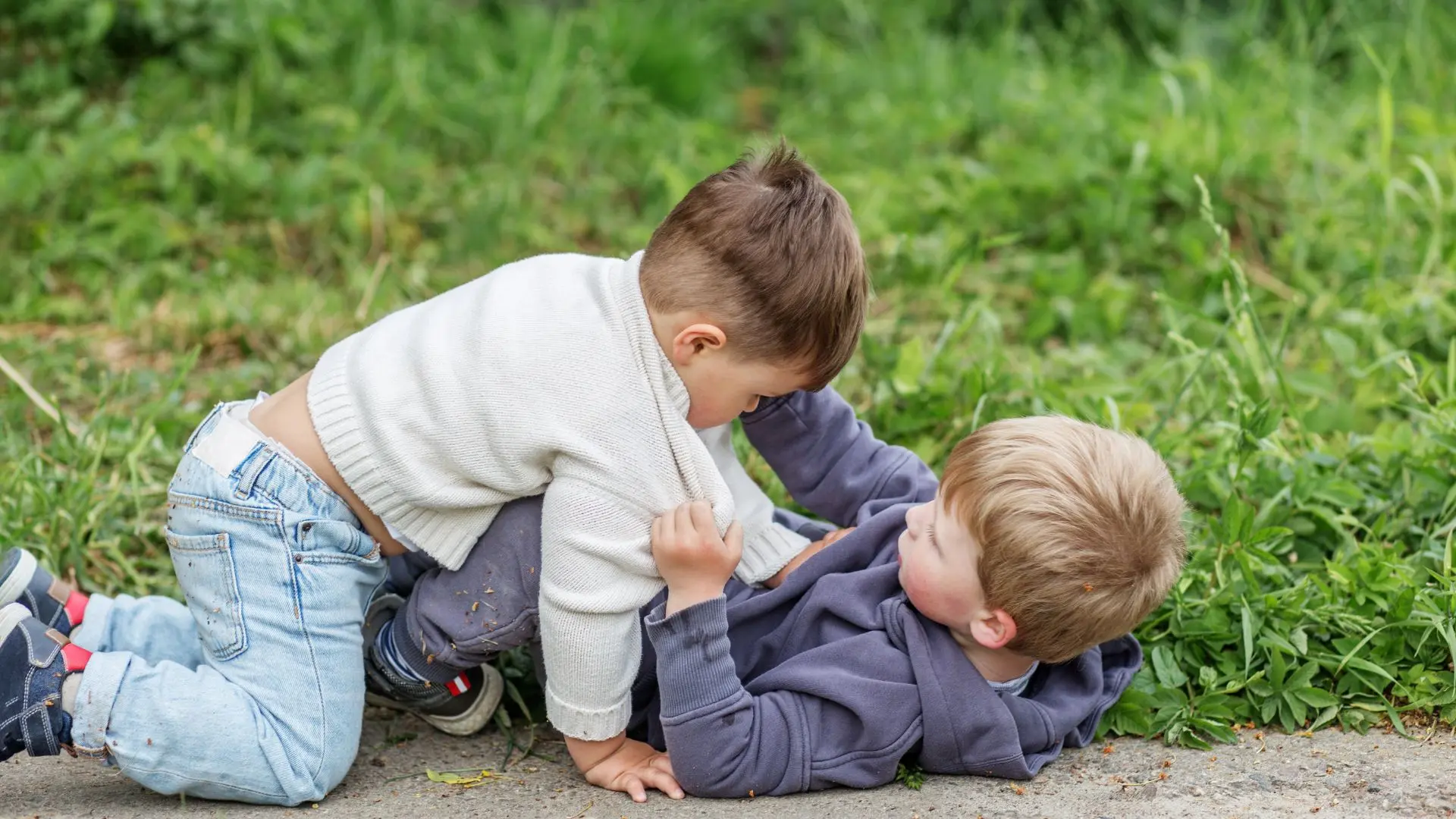Discover 9 practical tips for Anger Management for Kids to help your child control their emotions. From calming routines to problem-solving, learn proven strategies.

Anger is a natural emotion. So, it’s not about eliminating anger but teaching to control it and express it appropriately is more than just stopping tantrums or meltdowns. It’s about giving them the tools they need to handle their emotions throughout their life. By these strategies, you’re teaching your child emotional intelligence—how to recognize their emotions, express them in a healthy way, and resolve conflicts peacefully.
9 Actionable Solutions for Anger Management for Kids
Here are these:
1. Understand the Root Cause of Anger
To effectively address Anger Management for Kids, you must first understand the root causes of their anger. Kids often don’t have the vocabulary or self-awareness to explain why they are angry, so it’s up to you to observe and interpret their behavior.
Observe Triggers: Common triggers for anger in children include frustration, exhaustion, hunger, or feeling misunderstood. For example, your child may get angry when they’re asked to share their toys or when they lose at a game. If you notice that meltdowns frequently happen after school or during transitions between activities, those are clues to what’s triggering the anger.
Track Patterns: Keep a journal of when outbursts happen. Does your child always get angry when it’s time to turn off the TV? Are they more likely to throw a tantrum when they haven’t eaten a proper meal? Identifying patterns can help you intervene early and guide your child through Anger Management for Kids before the situation escalates.
Suppose your child gets upset every morning when it’s time to leave for school. The root cause might be anxiety about separating from you or fear of an upcoming test. Once you identify this, you can address it by providing extra reassurance or developing a calming morning routine to help with Anger Management in anxious situations.
Communicate Openly: When your child is calm, ask them about their feelings. You might say, “It looks like you were really frustrated when your friend didn’t share the toy. Can you explain what caused you to feel that way?” By helping your child articulate their feelings, you can help them understand their emotions and promote better Anger Management for Kids.
2. Teach Them to Recognize Their Anger
Teaching your child to recognize when they are feeling angry is one of the first steps in effective Anger Management for Kids. Many children don’t realize they are getting angry until they are already in the midst of an outburst.

Physical Signs of Anger: Teach your child to identify the physical signs that accompany anger, such as:
- Clenching fists
- A racing heartbeat
- Feeling hot or sweaty
- Tension in their jaw or muscles
These signs can serve as early warnings that they need to start using their Anger Management for Kids techniques.
Use Simple Language: It’s important to communicate in terms your child can easily understand. You might say, “I notice your hands are clenched and you’re breathing fast. That tells me you’re feeling really angry right now. Let’s take a break to calm down.”
3. Model Healthy Anger Management
As parents, you are your child’s biggest role model, and your reactions to anger set the standard for how they handle their emotions. Effective Anger Management for Kids starts with showing them how you manage your own frustrations.
Show Self-Control: When you feel angry, whether it’s due to traffic, work stress, or a disagreement at home, let your child see how you calm yourself down. For example, if you’re stuck in traffic and feeling irritated, say, “I’m getting frustrated because of this traffic, but I’m going to stay calm and listen to some music.”
Verbalize Your Emotions: Make it a habit to talk through your feelings aloud. Say things like, “I’m feeling upset, so I’m going to take a few deep breaths before I speak.”
This not only models Anger Management for your Kids but also helps them understand that emotions are normal and manageable.
4. Create a Calming Routine
Building a calming routine helps children learn to manage their anger before it spirals out of control. By offering specific techniques, you empower them with the tools they need for effective Anger Management for Kids.

Teach Deep Breathing: Simple deep breathing exercises can work wonders for kids when they feel angry. Have your child breathe in slowly through their nose for a count of five, hold for two seconds, and then exhale slowly through their mouth. Practicing this when calm ensures they’ll be ready to use it in the heat of the moment.
Designate a Calm Down Space: Create a quiet, designated area in your home where your child can go when they need to calm down. This could be a corner with pillows, calming toys, or books that they enjoy. Encourage your child to go there whenever they feel anger bubbling up.
Calming Tools: Consider offering calming tools like:
- Stress balls
- Weighted blankets
- Fidget spinners
- Coloring books
- Soft music or white noise machines
Allow your child to choose which tool helps them most. Letting them have control over their calming routine makes them feel more empowered and in control of their emotions.
5. Practice Problem-Solving Skills
Teaching kids how to solve their problems gives them an essential skill for effective Anger Management for Kids. Often, kids become angry when they feel powerless or frustrated because they don’t know how to fix a situation.
Teach Assertive Communication: Help your child understand the difference between expressing anger and acting aggressively. Teach them to use assertive communication to express their feelings. Role-play situations where they say things like, “I’m upset because you didn’t let me play. Can we take turns?”
Brainstorm Solutions Together: When your child is calm, help them brainstorm solutions to common problems. For instance, if sharing toys is a recurring issue, ask, “How can we make sure everyone gets a turn?” This empowers them to think critically and develop healthy solutions.
Teaching problem-solving as part of Anger Management for Kids reduces future conflicts.
6. Establish Clear Boundaries and Consequences
For Anger Management for Kids to be effective, children need to understand that while anger is a natural emotion, aggressive behavior is not acceptable. Setting clear boundaries helps prevent destructive actions.

Set Expectations: Explain to your child that while it’s okay to feel angry, hitting, yelling, or breaking things is not. Make sure they understand that there are healthy ways to express their anger, like talking or using their calming tools.
Consistent Consequences: When rules are broken, consequences must be applied consistently. If your child throws their toy in anger, you might say, “You’ve lost your toy for the rest of the day because you threw it when you were upset.” Make sure the consequence is related to the behavior and consistent each time.
Clear, consistent consequences reinforce Anger Management for Kids and teach responsibility for actions.
7. Encourage Positive Outlets for Anger
Giving your child positive outlets for their emotions is a proactive way to implement Anger Management for Kids and teach them healthier alternatives to lashing out.
Physical Activity: Physical activity is one of the best ways to release pent-up anger. Encourage your child to burn off their energy through activities like running, biking, jumping on a trampoline, or even dancing. Physical movement helps release endorphins and reduces stress, making it a powerful tool for Anger Management for Kids.
Creative Expression: Art, music, and other forms of creative expression can be excellent outlets for managing anger. Encourage your child to draw, paint, or write about what they’re feeling. Sometimes expressing emotions visually or through words can help a child process and understand their anger better.
Use Play as a Tool: Play therapy techniques, like using dolls or action figures to act out emotions, can also help children express what they’re feeling. Sometimes it’s easier for a child to project their emotions onto a toy, making it less overwhelming to confront their anger directly.
Incorporating play into Anger Management for Kids allows children to feel more in control of their emotions.
8. Praise Efforts to Manage Anger
Positive reinforcement is a crucial element in Anger Management for Kids. When your child makes an effort to calm themselves down, express their feelings appropriately, or use their coping strategies, it’s essential to acknowledge and praise these efforts. Reinforcing positive behavior encourages them to continue using these healthy strategies.

Positive Reinforcement: Whenever your child successfully manages their anger, praise them for their efforts. It’s important to be specific about what you’re praising. Instead of just saying, “Good job,” you might say, “I’m proud of how you took deep breaths when you were feeling angry instead of yelling.” This reinforces the behavior and makes it more likely to be repeated.
Reward Progress: Consider using a reward system to encourage Anger Management for Kids. For example, create a simple chart where your child earns a sticker or token each time they successfully manage their anger. After accumulating a certain number of tokens, they can earn a small reward like extra playtime or a special outing. This helps motivate children to continue practicing their anger management techniques.
By rewarding progress, you help children associate positive emotions with controlling their anger, making them more likely to use these strategies in the future.
9. Seek Professional Help if Needed
In some cases, even with all the right strategies, your child may continue to struggle with managing their anger. If their outbursts are frequent, severe, or lead to harmful behavior, it may be time to seek professional assistance to ensure effective Anger Management for Kids.
Know When to Seek Help: If your child’s anger leads to physical aggression, destruction of property, or causes significant disruptions in their daily life, consider reaching out to a child psychologist or counselor. A professional can help identify any underlying issues such as anxiety, trauma, or developmental disorders that may be contributing to their anger.
Work with a Specialist: Therapists trained in Anger Management for Kids can offer advanced coping strategies tailored to your child’s specific needs. Techniques like Cognitive Behavioral Therapy (CBT) can help children learn how to change negative thought patterns that contribute to their anger. They may also engage in play therapy or other methods that allow children to explore and understand their emotions in a safe, supportive environment.
Seeking help early ensures that your child receives the tools and support they need to manage their anger in a healthy way as they grow older.
Conclusion
By implementing these strategies for Anger Management for Kids, you’re helping them build the skills they need to navigate their feelings with confidence and control. Start today by identifying your child’s triggers and developing a calming routine that works for them. Remember, every effort you make now will pay off in the long run, equipping your child with lifelong skills for handling their emotions.
If you’re feeling overwhelmed or need additional support, don’t hesitate to reach out to a professional. Sometimes, a fresh perspective and expert guidance can make all the difference. Your child’s emotional well-being is worth it.
Let’s work together to foster a future where your child can manage their anger with grace and confidence. Keep the conversation going and share your experiences—how have you helped your child manage their anger?
You may also be interested in : How To Minimize Anger and Aggressive Behavior in Children? 10 Things to Avoid